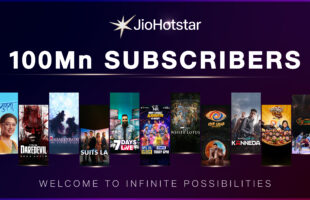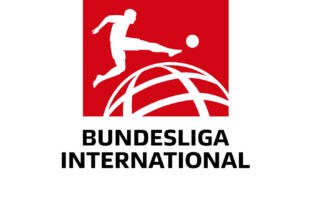POPULATION 4,570,579 TV HOUSEHOLDS 2,525,000 TV PENETRATION 99.3% HOUSEHOLD SIZE 2.8 PAY-TV PENETRATION 68.2% INTERNET USERS 4,780,000 INTERNET PENETRATION 94.6% BROADBAND SUBSCRIBERS 3,665,000 BROADBAND PENETRATION 42.6% MOBILE SUBSCRIBERS 5,027,000 MOBILE PENETRATION 135% MULTICHANNEL HOMES 980,000 MULTICHANNEL PENETRATION 68.2% NON-TERRESTRIAL TV CONNECTIONS 980,604 -New Zealand Population 2015 – World Population Review -New Zealand Media Stats, by NationMaster.com -Sky TV -New Zealand – Telecoms, Mobile, Broadband and Forecasts, by Buddecomm -Multichannel Television Advertising in Asia, by CASBAA -Internet in New Zealand, by Wikipedia -OECD Broadband Benchmarking results – June 2015 -Social, Digital & Mobile in APAC, by We Are Social Singapore -Asia Pacific Multichannel TV 2016 by CASBAA.

New Zealand pay-TV operator Sky Network Television and telco Vodafone Europe B.V.1, a wholly owned subsidiary of Vodafone Group Plc, have now decided to terminate the sale and purchase agreement in relation to the proposed merger of SKY and Vodafone New Zealand.
In a statement, SKY and Vodafone New Zealand said they would continue to work together to strengthen their commercial relationship for the benefit of the customers and the shareholders of their respective organisations.
In June 2016, the pair announced their plan to merge, a move they said would create a leading integrated telecommunications and media group in New Zealand, with the combined group having the ability to offer New Zealand’s best entertainment content across all platforms and devices in a rapidly evolving media and telecommunications market.
In October 2106, however, New Zealand’s Commerce Commission sent a Letter of Unresolved Issues to the pair in relation to their proposed merger, suggesting it was not satisfied that the proposed merger will not have, or would not be likely to have, the effect of substantially lessening competition in the telecommunications and pay-TV services markets.
It sought further submissions from Sky and Vodafone on the specific areas of concern identified, including the ability of a merged Sky/Vodafone to use ownership of content – particularly live sports – to make buying Sky on a standalone basis less attractive than buying it in a bundle with Vodafone’s broadband and mobile services.
On February 23rd 2017, the Commerce Commission said it had declined to grant clearance for the proposed merger, suggesting that to clear the merger it would need to have been satisfied that it was unlikely to substantially lessen competition in any relevant market. ”Given we are not satisfied that we can say that competition is unlikely to be substantially lessened by the proposed merger, we must decline clearance,” it concluded.
The pair appealed that decision on March 22nd, subsequently amending it on May 18th. That appeal has now been withdrawn.
Still with NZ, Air New Zealand signed a contract for Inmarsat’s GX Aviation service on long and short-haul aircraft fleets.
Inmarsat (ISAT.L), the world’s leading provider of global mobile satellite communications, today announced that it has signed a contract with Air New Zealand to provide Global Xpress (GX) connectivity across the airline’s long-haul and short-haul fleets. GX for Aviation, the world’s first globally available high-speed broadband network designed for mobility, will be deployed by Air New Zealand to deliver a reliable, seamless broadband in-flight Wi-Fi experience across the world.
“We’re very excited about working with Air New Zealand. They’re an innovative organisation and have taken a fresh approach to finding the right connectivity partner,” says Inmarsat Aviation president Leo Mondale.
“GX for Aviation is the only in-flight broadband solution that is fast, reliable and truly consistent, with seamless coverage across the world provided by a single operator. Our focus is on ensuring customers enjoy a frictionless inflight broadband experience,” continued Leo Mondale.
Air New Zealand’s Chief Digital Officer, Avi Golan, said “We wanted a worldclass solution that would meet the high expectations of our customers, offering both a consistent and reliable service. We then spent time testing the GX live experience on Honeywell’s B757 test aircraft, as part of Inmarsat Aviation’s global test tour. We‘ve been monitoring the developments in inflight connectivity for some time and with GX, we believe we will be able to offer broadband on-board in innovative ways that will further set Air New Zealand apart as one of the world’s leading airlines.”
For the first time, GX for Aviation connectivity will be integrated with Air New Zealand’s Inflight Entertainment (IFE) system provided by Panasonic. This was specifically requested by Air New Zealand and all parties have embraced the opportunity to come together to meet their needs.
GX for Aviation is the ideal solution for Air New Zealand. The global nature of the GX network means that Air New Zealand’s ultra-long-haul routes, across the Pacific and on to the United Kingdom are covered, whilst the ability to layer-in capacity over Air New Zealand’s key regional destination hubs, such as the East Coast of Australia, will ensure that the customer experience will be of consistently high quality.
The first GX-equipped aircraft are expected to begin proving flights in the second half of 2017, with services progressively available on Tasman, Pacific and long-haul fleets from the end of next year. It is anticipated that domestic routes will be added to the connected fleet from 2018.
Air New Zealand is joining a growing fleet of airline customers who have chosen GX, including Lufthansa, Austrian Airlines and Singapore Airlines.








